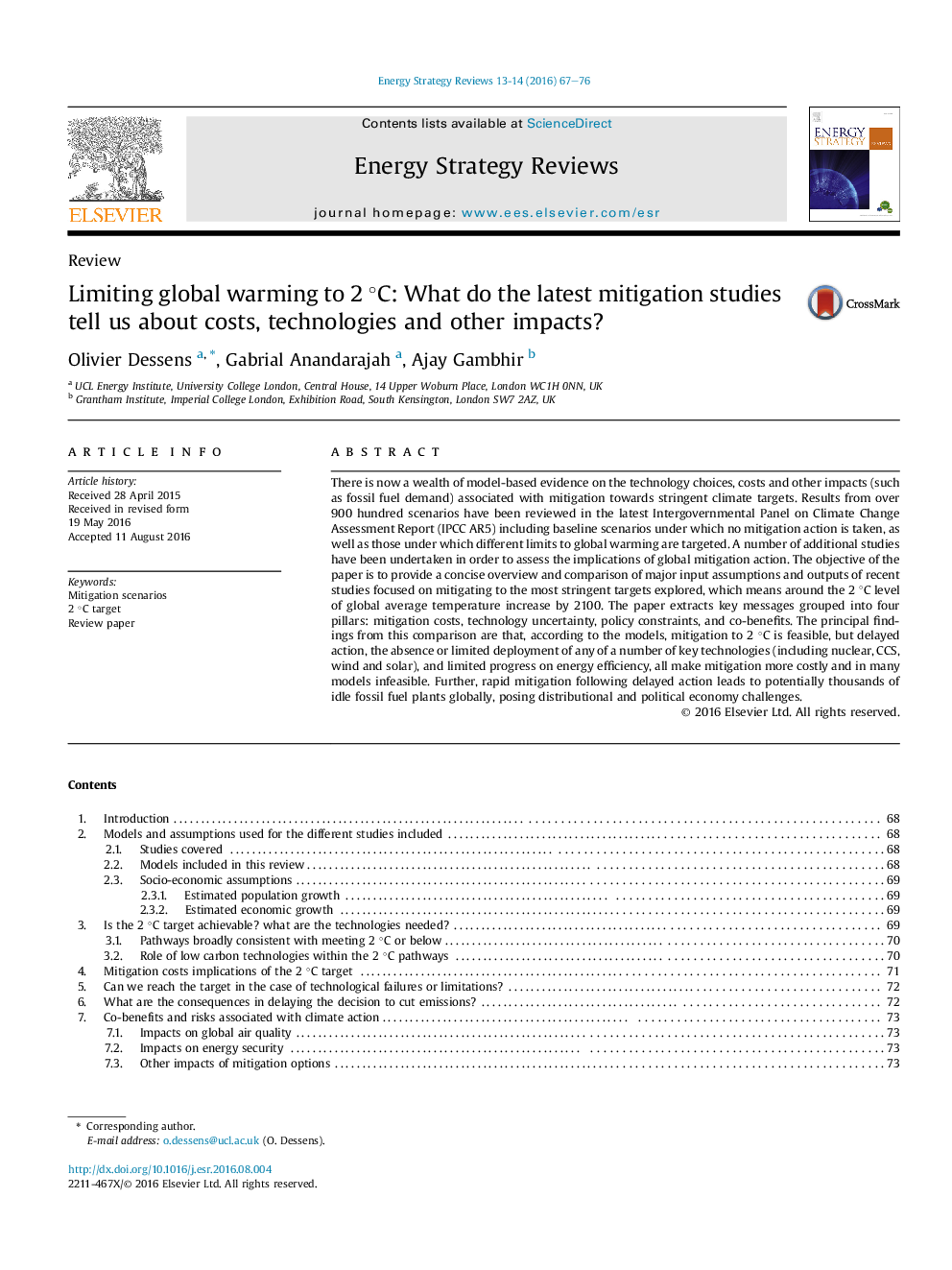| کد مقاله | کد نشریه | سال انتشار | مقاله انگلیسی | نسخه تمام متن |
|---|---|---|---|---|
| 1029767 | 1483526 | 2016 | 10 صفحه PDF | دانلود رایگان |
• Mitigation to 2 °C or below still is possible.
• Delays or removal of key technologies makes mitigation harder and more costly.
• Decarbonisation of the electricity sector and increase in electrification are required.
• Energy efficiency gains improve the feasibility and reduce the cost of mitigation.
There is now a wealth of model-based evidence on the technology choices, costs and other impacts (such as fossil fuel demand) associated with mitigation towards stringent climate targets. Results from over 900 hundred scenarios have been reviewed in the latest Intergovernmental Panel on Climate Change Assessment Report (IPCC AR5) including baseline scenarios under which no mitigation action is taken, as well as those under which different limits to global warming are targeted. A number of additional studies have been undertaken in order to assess the implications of global mitigation action. The objective of the paper is to provide a concise overview and comparison of major input assumptions and outputs of recent studies focused on mitigating to the most stringent targets explored, which means around the 2 °C level of global average temperature increase by 2100. The paper extracts key messages grouped into four pillars: mitigation costs, technology uncertainty, policy constraints, and co-benefits. The principal findings from this comparison are that, according to the models, mitigation to 2 °C is feasible, but delayed action, the absence or limited deployment of any of a number of key technologies (including nuclear, CCS, wind and solar), and limited progress on energy efficiency, all make mitigation more costly and in many models infeasible. Further, rapid mitigation following delayed action leads to potentially thousands of idle fossil fuel plants globally, posing distributional and political economy challenges.
Journal: Energy Strategy Reviews - Volumes 13–14, November 2016, Pages 67–76
